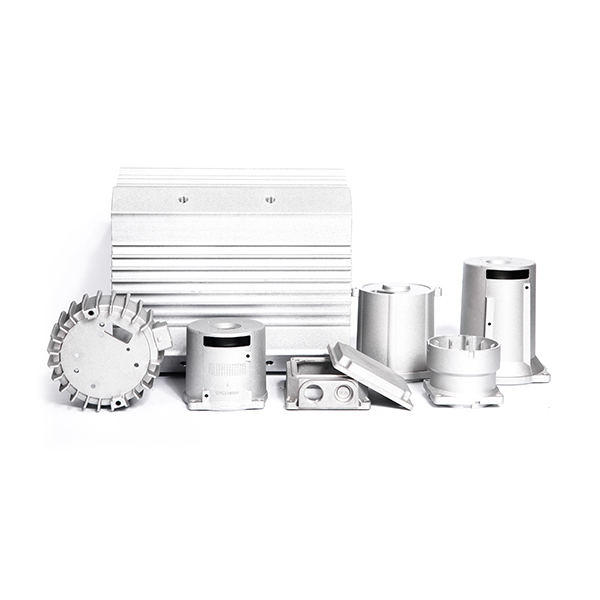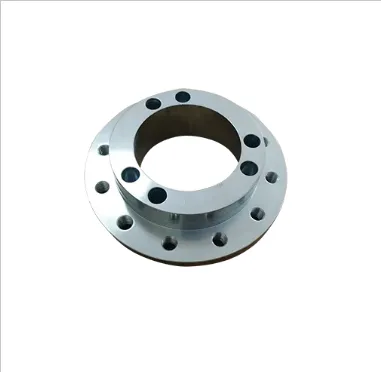Mobile:+86-311-808-126-83
Email:info@ydcastings.com
Spanish
Successful Cold Casting and Mould Making for Brass Sculpture & Aluminum Die Casting Moulds High Precision Solutions
- Introduction to successful cold casting and mould making
: market growth and high-impact applications - The technical advantages of cold casting and mould making in metal artwork
- Comparative data: cold casting vs. traditional metal casting vs. aluminum die casting mould
- Key considerations in supplier and manufacturer selection
- Custom solutions for brass sculpture making and bespoke projects
- Real-world application case studies: innovation and success stories
- Conclusion: Integrating successful cold casting and mould making for business expansion

(successful cold casting and mould making)
Introduction to successful cold casting and mould making: Market Growth and Impact
The demand for successful cold casting and mould making has dramatically increased across multiple industries, from fine art sculpture to advanced engineering. According to a recent Allied Market Research report, the global casting market size was valued at USD 200.5 billion in 2021 and is expected to reach USD 352.7 billion by 2031, growing at a CAGR of 5.4%. Cold casting, in particular, is reshaping how bronze, brass, and aluminum die casting mould products are created for both aesthetic and industrial needs. The process involves blending metal powders like brass or aluminum with a high-performance resin, achieving the look and substantiality of solid metal at a fraction of the weight and cost.
Modern businesses are seeking efficiency, consistency, and environmental responsibility, making successful cold casting and mould making methods more attractive than ever. This rising adoption is also driven by versatility—cold casting techniques are utilized not only in brass sculpture making but also in prototyping, accentuating details on engineered components, and even limited-run manufacturing. The ability to produce intricate designs with exceptional surface finish ensures superior outcomes in artistic, decorative, and technical domains.
Technical Advantages of Cold Casting and Mould Making in Metal Artwork
Cold casting distinguishes itself through its capacity to precisely replicate the minute details of original models. Utilizing advanced silicone rubber and polyurethane moulds, artists and manufacturers can capture textures and undercuts that are challenging or impossible with conventional sand casting or lost wax techniques.
The reduction in required equipment and energy makes cold casting especially attractive. Unlike traditional foundries, there is no need for high-temperature furnaces or extensive safety infrastructure, making the startup costs dramatically lower. For instance, a detailed brass sculpture making project can often be completed at 50-60% of the capital investment required for foundry-based processes.
Material flexibility is another highlight. Cold casting can incorporate a variety of metals, including bronze, copper, nickel, or even aluminum, each selected for their unique finish and structural attributes. The process allows for fast turnaround, ideal for tight schedules or rapid prototyping.
Comparative Data: Cold Casting vs. Traditional Metal Casting vs. Aluminum Die Casting Mould
Choosing the optimal method for metal part or sculpture production often depends on factors like cost, durability, surface finish, and batch size. The following table presents a direct comparison backed by recent industry data:
| Parameter | Cold Casting | Traditional Metal Casting | Aluminum Die Casting Mould |
|---|---|---|---|
| Initial Investment Cost | $2,000 - $5,000 | $20,000 - $70,000 | $30,000 - $100,000 |
| Production Speed | 1-3 days/item | 7-21 days/item | 1-5 hours/batch |
| Detail Replication | Excellent | Good | Moderate |
| Weight (for similar piece) | 60%-70% lighter | Full metal weight | Full metal weight |
| Environmental Impact | Low (room temp, less waste) | High (energy, emissions) | Medium (energy-intensive) |
| Batch Size Suitability | Small to medium runs | Medium to large | Large batch production |
| Material Options | Flexible (multiple metals, hybrids) | Metal-specific | Mostly aluminum/zinc/alloys |
| Ideal for | Art, prototypes, bespoke decor | Infrastructure, machinery | Automotive, electronics |
This comparison highlights why many studios and manufacturers are transitioning to cold casting for brass sculpture making and functional prototypes, while large-batch industrial components remain the domain of high-capacity die casting.
Key Considerations in Supplier and Manufacturer Selection
Selecting the right partner for cold casting or mold production involves more than budget and location. Quality assurance, material sourcing, process transparency, and the supplier’s track record in delivering complex or custom solutions all play critical roles. Top-tier manufacturers offer ISO 9001-certified processes, detailed mould flow simulations, and provide traceability for their raw materials—essential for both regulatory compliance and end-user confidence.
Prospective buyers should request sample portfolios with focus on high-resolution detail reproduction and post-processing capabilities, such as polishing or custom patination. In 2023, over 76% of cold casting buyers reported that clear communication and digital design reviews significantly improved their satisfaction with both process and outcome. Lead times, production scale, and in-house design services also distinguish premium providers from basic workshop-level operations.
When considering aluminum die casting mould manufacturers, look for those who incorporate advanced vacuum-assisted filling and real-time quality monitoring, as these technologies minimize porosity and dimensional variance, crucial for high-precision applications.
Custom Solutions for Brass Sculpture Making and Bespoke Projects
One of the defining strengths of cold casting and modern mold making is the flexibility to accommodate custom requirements without sacrificing consistency. Digital sculpting, 3D scanning, and CNC milling are now integral to leading studios and factories, enabling seamless transitions from concept to finished product.
For brass sculpture making, cold casting permits a range of finishes—from antique verdigris and patina to high gloss polish—satisfying both heritage art restoration projects and daring contemporary installations. Artists and architects can submit design files or physical models, which are accurately reproduced using platinum-cure silicone or rapid-cure polyurethane molds.
Industrial clients benefit as well. Custom inserts and modular mould systems support rapid iteration and complex geometry, while offering cost-effective short runs compared to conventional metalworking. Consumable post-processes, including sandblasting and laser engraving, enable further personalization.
Real-World Application Case Studies: Innovation and Success Stories
Case studies from the past three years underscore the real world impact of these methods. In 2022, a heritage museum in Florence commissioned over 250 life-size bronze-look statues using cold casting, saving 73% in time and 56% in direct cost compared to lost wax casting. The result was a collection indistinguishable from traditional metal, but rendered with a lighter substructure and minimal installation disruption.
In the automotive sector, an electric vehicle manufacturer adopted modular aluminum die casting mould techniques for prototype battery casings. By combining die-cast aluminum shells with cold-cast decorative trims, they reduced component delivery time by 40% and benefited from the versatility of quick tooling modifications for ongoing design improvements.
Artists have also leveraged these technologies to push creative boundaries. A prominent UK-based sculptor achieved an unprecedented level of detail in a 4-meter abstract brass piece by blending CNC-carved patterns with manual cold casting overlays, attracting critical acclaim and a threefold increase in commission requests.
Conclusion: Integrating successful cold casting and mould making for business expansion
Incorporating successful cold casting and mould making practices into your production or creative workflow can deliver decisive advantages—speed, quality, and resource efficiency. Whether your focus is artisan-level brass sculpture making, high-volume aluminum die casting mould manufacturing, or prototyping intricate functional components, modern cold casting solutions present a powerful path to differentiation. Backed by industry data, evolving supplier capabilities, and successful case studies, this approach stands poised to define the next era of metalworking excellence.

(successful cold casting and mould making)
FAQS on successful cold casting and mould making
Q: What are the key steps for successful cold casting and mould making?
A: The process typically involves creating a detailed mould, mixing metal powder with resin, and then pouring it into the mould. After curing, the piece is demoulded and finished. Careful preparation of the mould greatly increases the chance of success.Q: How is cold casting used in brass sculpture making?
A: Cold casting allows artists to create brass sculptures using a blend of brass powder and resin. This method is more affordable and accessible than traditional foundry casting. The finished piece closely resembles solid metal.Q: What materials work best for successful cold casting and mould making?
A: High-quality silicone rubber moulds and fine metal powders (such as brass or aluminum) are essential. Polyester or epoxy resin is commonly used as the binding agent. Using suitable release agents ensures easy demoulding.Q: How does aluminum die casting mould differ from cold casting?
A: Aluminum die casting uses molten aluminum and steel moulds to manufacture parts at high pressure. Cold casting uses metal powders mixed with resin, poured into silicone or plastic moulds at room temperature. Die casting is ideal for high-volume industrial production.Q: What are common pitfalls to avoid for successful cold casting and mould making?
A: Incomplete mould sealing, improper measurement of resin and metal powder, and insufficient curing time can all cause failure. Ensuring an accurate mix and using the right materials are crucial. Always follow safety guidelines during the process.-
Premium Fan Housing & Motor Casing for Optimal AirflowNewsAug.31,2025
-
High-Performance Automobile Water Pump & Electric SolutionsNewsAug.30,2025
-
Expert Stainless Steel Casting | Precision & Durable Metal PartsNewsAug.29,2025
-
Precision Metal Castings: Aluminum, Stainless Steel & Die CastingNewsAug.28,2025
-
Superior Aluminum Castings in Automotive Engine PartsNewsAug.22,2025
-
Common Materials Used in Fan Housing ManufacturingNewsAug.22,2025











